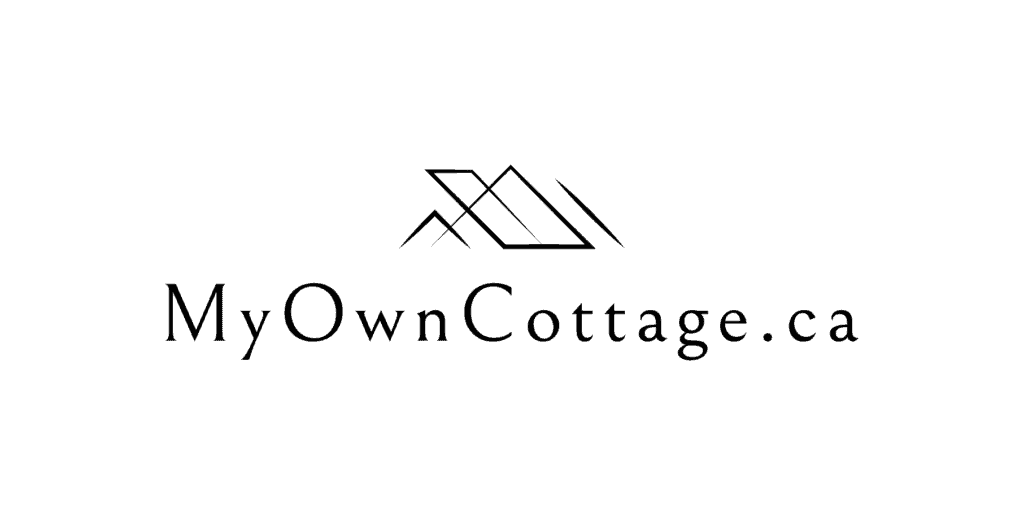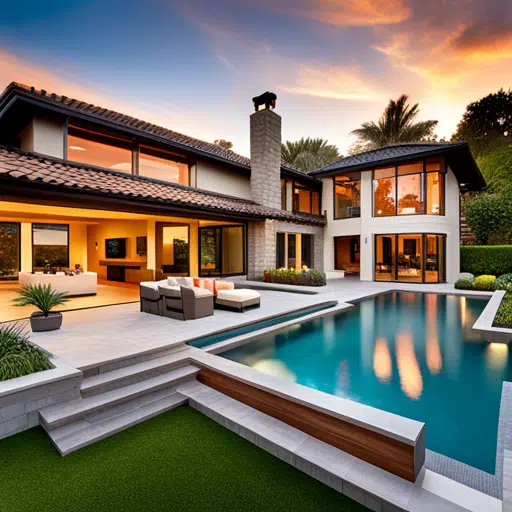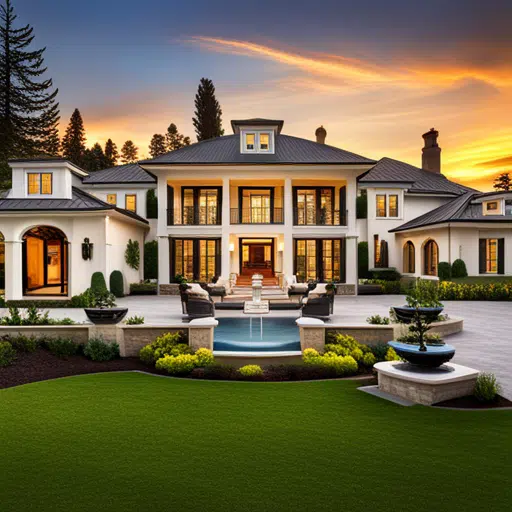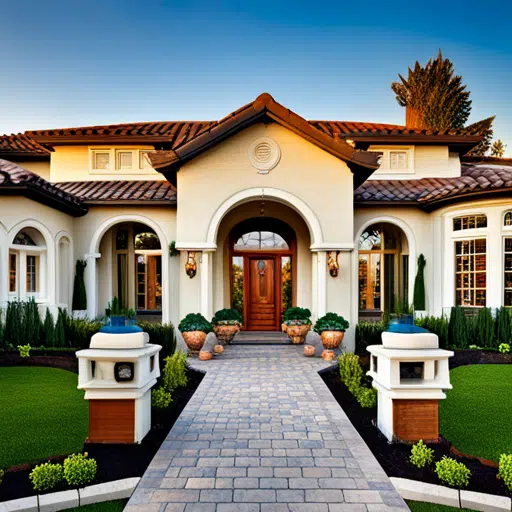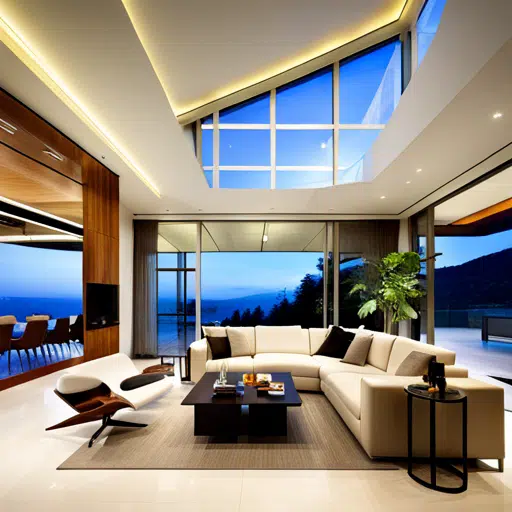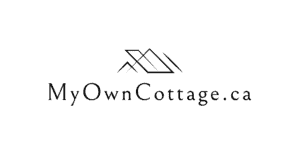Net Zero Prefab Homes
Home » Net Zero Prefab Homes
Net zero prefab homes are designed with sustainability in mind, achieving a balance between the energy they consume and the energy they produce.
These innovative dwellings represent a significant step towards eco-friendly living.
The housing market is entering a new era — one where homeowners and environmental stewards are no longer content with mere energy efficiency.
Rather, they now demand self-reliance and a return on their investment.
This means not just in terms of dollars, but also in carbon credits, coupled with environmental preservation.
Amid this global shift, “Net Zero” and “Prefab” have emerged as more than just buzzwords.
They now represent the convergence of cutting-edge technology and sustainable architecture.
This article takes a deep dive into the phenomenon of Net Zero Prefabricated Homes, exploring what they are, how they work, and why they might just be the future of housing.
As a quick example, our own prefab homes in Ontario offer budget-friendly and customizable designs, coupled with significant eco-friendly advantages!
The Blueprint of Net Zero Prefab Homes
Prefabricated homes, often abbreviated as “prefab homes,” have witnessed a quiet revolution in recent years.
No longer the flimsy, temporary shelters of the past, they are now architectural marvels, meticulously designed and precision-engineered for sustainable living.
Among them, the Net Zero prefab stands out, promising a home that generates as much energy as it consumes, leaving no carbon footprint.
The Innovation Within the Walls
A Net Zero prefab home is constructed in a controlled environment, using sustainable materials and state-of-the-art energy systems.
The innovations are not just in the design; they lie within the very foundation and framework of the house.
Advanced insulation, high-efficiency HVAC systems, and integrated solar panels are just the start.
These homes are often designed to be ‘passive’ — harnessing natural phenomena like the sun’s energy and the earth’s insulation to reduce operational costs to a minimum.
Net Zero in Action
The concept of Net Zero may seem lofty, but in practical terms, it’s incredibly beneficial.
These homes can cut energy bills down to almost nothing, offering a staggering economic incentive.
But the true value is in the environmental savings — each Net Zero home can stem the tide of climate change by reducing reliance on fossil fuels and shrinking residential carbon footprints.
Building the Future Today
The development of Net Zero prefab homes is much more than an architectural trend; it is a response to global calls for sustainability and a commitment to innovation.
But what does the future look like for this burgeoning industry?
Will these homes become the mainstay of residential architecture, or are they just a passing fad?
Bridging the Gap to Mainstream Adoption
While currently, Net Zero prefabs are a niche market, their scalability and the falling cost of renewable technology hint at a future where they could become the norm.
Government incentives, like those in Ontario, Canada, support the adoption of energy-efficient homes.
The evolution of the prefab concept, backed by solid environmental and economic arguments, points toward a day when Net Zero living is within reach for any budget.
The Technological Road Ahead
Technology will continue to be the driving force behind Net Zero homes.
Developments in building materials, off-site manufacturing, and smart home integration are poised to take these structures beyond mere shelter and into the realm of energy-producing entities.
The Environmental Advantages of Net Zero Prefab Homes
Sustainability in our living spaces is not a new concept.
However, the recent surge in environmental consciousness and the need to reduce our carbon footprint has led to a renaissance in architecture and home construction.
Among the innovative solutions gaining traction are Net Zero prefab homes.
These homes redefine our relationship with the environment, showcasing that luxury and comfort need not be at the cost of the planet.
In this detailed section, we’ll elucidate the environmental benefits and considerations of Net Zero prefab homes.
We’ll also provide homeowners, architecture enthusiasts, and sustainability advocates with everything they need to know before making such an important home investment.
The Genesis of Net Zero Prefab Homes
The concept of Net Zero homes isn’t just about minimizing energy consumption; it’s also about producing as much energy as the home consumes over a year.
Prefabricated (or prefab) homes, on the other hand, have revolutionized the construction industry by offering quicker build times and less on-site waste.
Net Zero and prefab homes have merged as part of the larger green building movement.
They aim to create a more harmonious coexistence with our natural surroundings.
Combining the principles of both, Net Zero prefab homes are at the forefront of sustainable architecture.
They integrate renewable energy systems, advanced building materials, and airtight insulation to achieve their eco-friendly status.
The Components of Sustainability
Advanced Building Materials
Net Zero prefab homes often employ cutting-edge materials and construction techniques to enhance energy efficiency.
This includes the use of structural insulated panels (SIPs), which are high-performance building materials that offer significant advantages over conventional wood frames.
Additionally, many prefab homes feature sustainable materials like bamboo flooring, recycled metal roofing, and low-VOC paints, reducing the environmental impact of the home’s interior.
Energy-Efficient Systems
An integral part of a Net Zero prefab home is its energy systems.
These homes are equipped with state-of-the-art HVAC systems, including ground-source heat pumps and energy recovery ventilators.
Renewable energy sources, such as solar panels and wind turbines, are often integrated to power these systems and contribute to the home’s overall energy production.
Water Conservation
Water conservation is another key element of sustainable living.
Net Zero prefab homes incorporate advanced plumbing fixtures, greywater recycling systems, and drought-resistant native landscaping designs.
These features not only reduce water waste but also promote a more efficient use of this precious resource.
The Lifecycle Analysis
Lifecycle analysis (LCA) is a method used to evaluate the environmental impact of a product or process over its entire lifecycle.
When it comes to Net Zero prefab homes, the LCA helps to identify areas for improvement and to ensure that the environmental benefits of the home are maximized from manufacturing to daily operation.
Manufacturing and Transportation
The manufacturing process of prefab homes can be inherently more sustainable than traditional on-site construction.
Controlled factory conditions allow for greater material efficiency and waste reduction.
Furthermore, the transportation of prefab home components can be optimized to reduce greenhouse gas emissions.
They can be shipped in large quantities with less need for heavy construction machinery on-site.
Daily Operation
The daily operation of a Net Zero prefab home is where the sustainability principles truly shine.
With energy-efficient appliances, passive solar design, and effective insulation, these homes can achieve a balance where the energy produced on-site is equal to, or greater than, the energy consumed.
The Integration with Nature
Net Zero prefab homes are not only environmentally friendly but often are also designed to integrate seamlessly with the natural landscape.
Their modular design allows for customizability, so homeowners can adapt the home to fit the contours of their property.
Passive Design Elements
Passive design strategies, such as orientation, window placement, and shading, help to reduce the home’s energy load by utilizing the natural elements.
In colder climates, south-facing windows might harness the sun’s heat, while in warmer regions, overhangs could be used to shade windows and reduce the need for air conditioning.
Responsible Land Use
The construction of a Net Zero prefab home should also consider responsible land use, preserving the natural ecosystem of its location.
This can involve minimal disruption of the landscape during construction, as well as thoughtful integration of the home into its surroundings through landscaping and other measures.
Essential Considerations
No construction project or home is without its challenges, and Net Zero prefab homes are no exception.
There can be higher upfront costs associated with the advanced materials and energy systems required for these homes.
Additionally, finding skilled contractors to assemble the prefab components is crucial to ensuring the home’s long-term performance.
Cost Considerations
The initial investment for a Net Zero prefab home may be higher compared to a traditional home.
However, homeowners will often see a return on that investment through reduced energy bills and potential tax incentives for renewable energy use.
Quality Control
Selecting a reputable prefab home builder with a proven track record is essential for quality control.
Homeowners should research and visit completed projects, ensuring the builder can produce a home that meets their environmental and comfort standards.
The Human Element
The success of sustainable housing ultimately relies on the people who inhabit and maintain these living spaces.
Homeowners must be educated on the operation and maintenance of their Net Zero prefab home to ensure that all systems continue to function at peak efficiency.
Energy Savings
Homeowners often report significant reductions in their energy bills, or in the case of Net Zero homes, the complete elimination of energy costs.
These savings not only provide a financial benefit but also contribute to reducing the demand on local power grids.
Environmental Impact
The environmental benefits of Net Zero prefab homes can be substantial.
From decreased carbon emissions to reduced water usage, these homes play a role in mitigating the impacts of climate change and promoting a more sustainable way of life.
The Future of Prefabrication
The future of prefab homes, particularly Net Zero models, is an exciting one.
Advances in technology and a growing awareness of environmental issues are driving innovation in the industry.
The potential for these homes to become more accessible and widespread is on the horizon, as they offer a model for sustainable living that is both aspirational and attainable.
Evolving Technologies
Rapid advancements in building materials, energy systems, and smart home technology will continue to enhance the appeal and performance of Net Zero prefab homes.
For example, the emergence of energy-storing materials and the integration of AI to optimize home operation are already in development.
Market Adoption
As the demand for sustainable living options increases, we can expect a rise in the market adoption of Net Zero prefab homes.
Government incentives and the commitment of real estate developers will also play a significant role in making these homes more mainstream.
Community Building
The Net Zero prefab home movement is not just about individual dwellings; it’s about building communities that share the same sustainable values.
Clusters of these homes can create localized energy networks, foster communal gardens, and support a shared commitment to reducing environmental impact.
Navigating the Path to Your Own Net Zero Prefab Home
Building a Net Zero prefab home is an exciting prospect, but it’s not without its challenges.
Prospective homeowners must be aware of the process and the considerations involved.
The Planning and Production Phases
From concept to completion, constructing a Net Zero prefab is a detailed process.
The first step is thorough design and planning.
Each home must be custom-built to its location, taking into account factors like climate, available renewable resources, and local building codes.
Production follows a stringent schedule, with various components of the home being manufactured off-site before final assembly at the intended location.
Living Net Zero
Living in a Net Zero prefab home is a unique experience.
Owners must learn to manage their energy consumption to keep it within the home’s production limits.
Smart home technology plays a key role, allowing residents to monitor and control every aspect of their energy homeostasis.
Making the Case for Net Zero Prefabs
The benefits of a Net Zero prefab home are both tangible and intangible.
Beyond the environmental and economic incentives, these homes offer a level of security and self-sufficiency that is increasingly rare in today’s world.
The Environmental Edge
Net Zero homes are a critical component in the fight against climate change.
By reducing the need for fossil fuels, they cut household greenhouse gas emissions, creating a ripple effect that can lead to a significant reduction in a community’s overall carbon footprint.
The Economic Argument
While the initial cost of a Net Zero prefab home may be higher than that of a traditional build, the long-term savings are significant.
Lower utility bills and potential income from selling excess energy back to the grid can make a compelling case for investment.
Health and Comfort
The materials and design of a Net Zero home contribute to a healthier living environment.
Efficient ventilation systems and non-toxic materials ensure clean indoor air quality.
Consistent temperature and lighting, provided naturally whenever possible, offer unparalleled comfort.
Debunking the Myths of Prefab
Despite their growing popularity, prefabricated homes still face a number of misconceptions.
It’s important to separate fact from fiction to fully appreciate the value of these innovative structures.
Myths About Quality
There is a common misconception that prefab homes are of lower quality than traditional builds.
In reality, the controlled environment of a prefab factory ensures a higher standard of construction, with fewer defects and delays.
Affordability and Customization
Many assume that prefab homes are cheaper but lack the customization options of traditional builds.
While it’s true that some prefabs can offer cost savings, the ability to customize is often greater due to the modular construction process.
The Aesthetic Stigma
Prefab homes are sometimes associated with a particular aesthetic.
However, modern design trends and the flexibility of modular construction mean that they can be indistinguishable from traditionally built homes, if that’s the desired look.
Considering a Net Zero Prefab Home for Your Next Move
If you’re in the market for a new home and sustainability is a top priority, a Net Zero prefab could be the perfect choice.
The embracing of this innovative approach to living successfully combines ecological responsibility with luxurious living.
The Decision-Making Process
Before making the leap to a Net Zero prefab, it’s essential to conduct thorough research and consider all factors.
From financing options to locating reputable prefab companies, every step requires careful consideration.
The Future Role of Net Zero Prefabs
The real estate market is constantly evolving, and Net Zero prefabs are positioned to play a significant role in its future.
With growing awareness and support for sustainable living, these homes are likely to become more prevalent, driven by advances in technology and changing consumer preferences.
The rise of Net Zero prefab homes represents a new paradigm in architecture and sustainable living.
By integrating renewable energy sources with cutting-edge design and technology, these homes promise a future where our dwellings not only protect the environment but actively contribute to its preservation.
Whether you’re a homeowner, an architecture enthusiast, or simply looking to invest in a better future, the Net Zero prefab concept is undeniable proof that we can live in harmony with nature without sacrificing comfort or style.
Get Affordable Prefab Homes in Ontario: Contact us Today!
With our Affordable Prefab Homes in Ontario, we pride ourselves on delivering exceptional customer service!
We ensure a seamless purchasing and installation process for your dream home.
Our team is dedicated to meeting your unique needs and transforming your vision into a beautiful reality.
To start your journey of building an affordable prefab home in Ontario, we invite you to get in touch with us at My Own Cottage.
You can reach out to us through our website’s Contact Us page, via email, or by direct phone call.
Our expert team is ready to listen to your vision, discuss your requirements, and guide you through the stress-free process of prefab home construction.
We look forward to partnering with you to create a sustainable, highly valuable, and personalized space that reflects your individual style and meets your specific needs.

Contact us today and let’s embark on this exciting journey together.
Thanks for reading!
If you’re interested in building a prefab home, cabin or cottage on a lot of your own, feel free to book a no-obligation consultation with us here at My Own Cottage Inc. – and get started on your dream home today!
P.S: Or if you prefer, you can simply fill out the form below!
